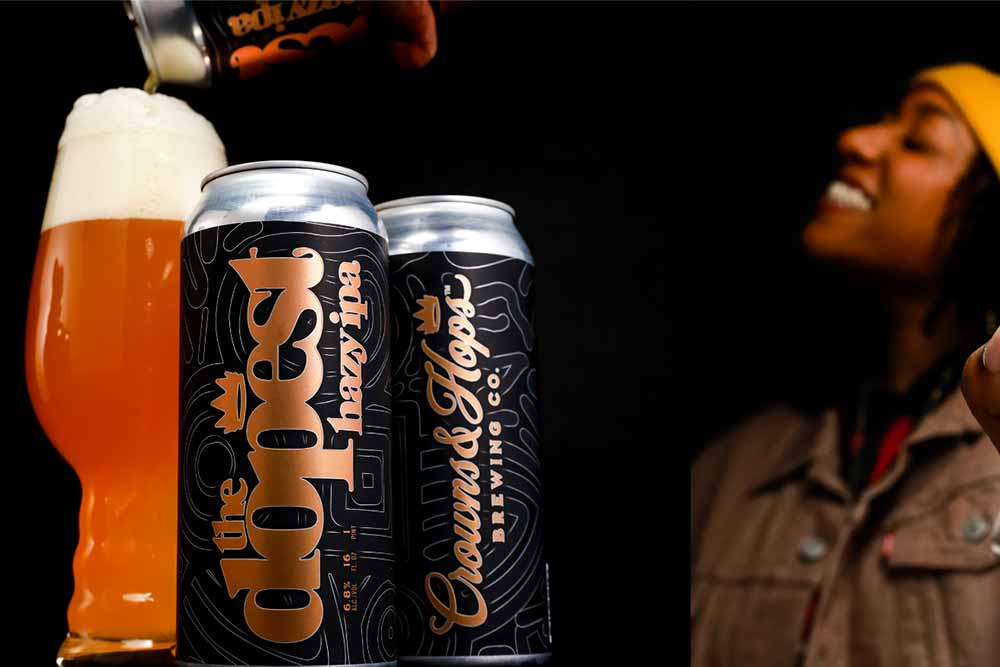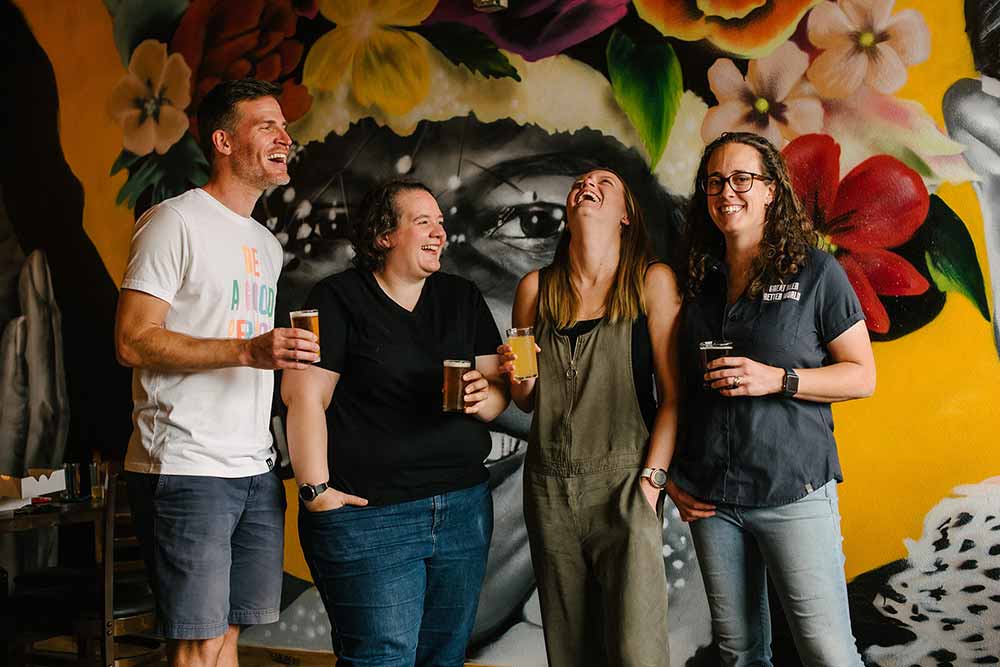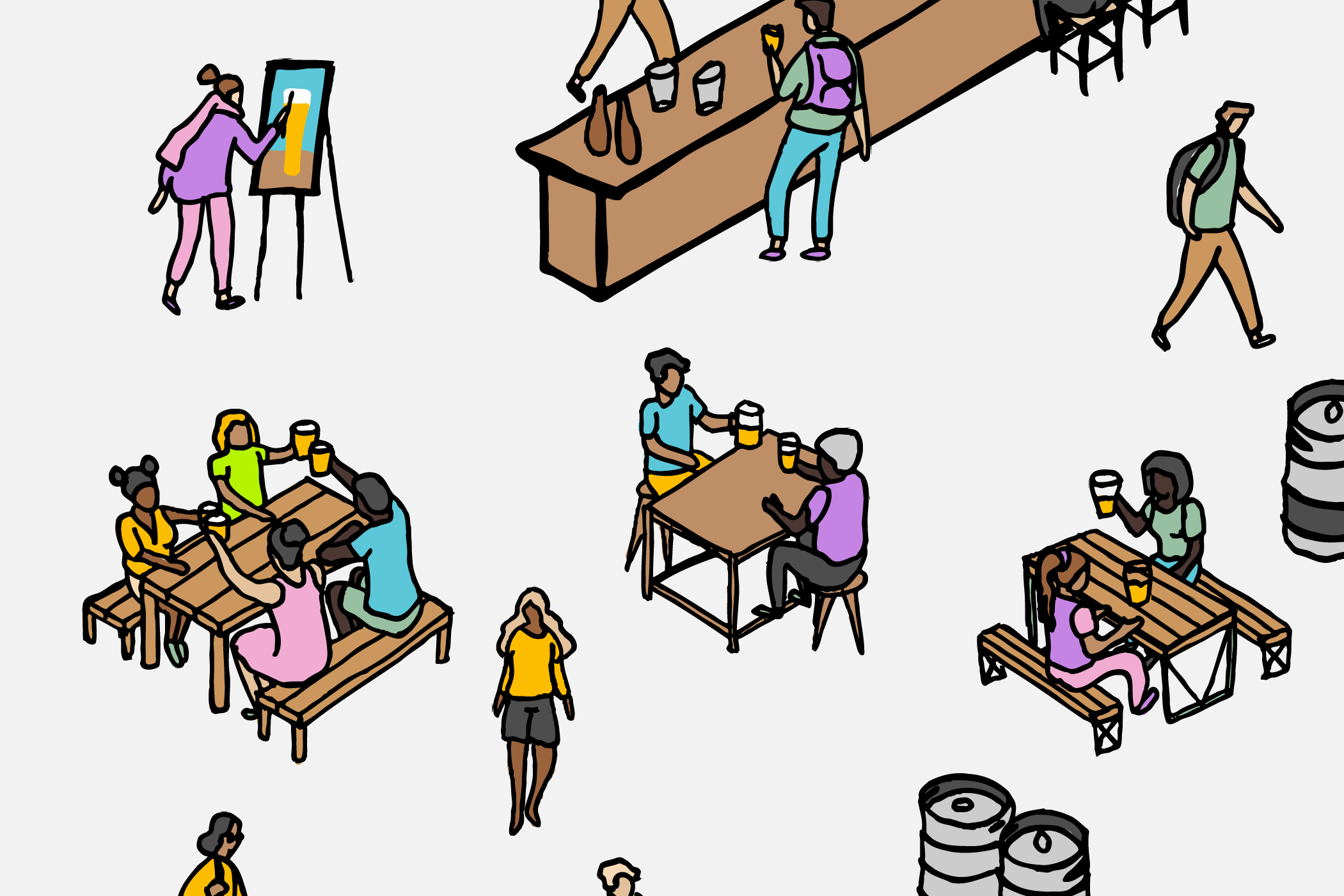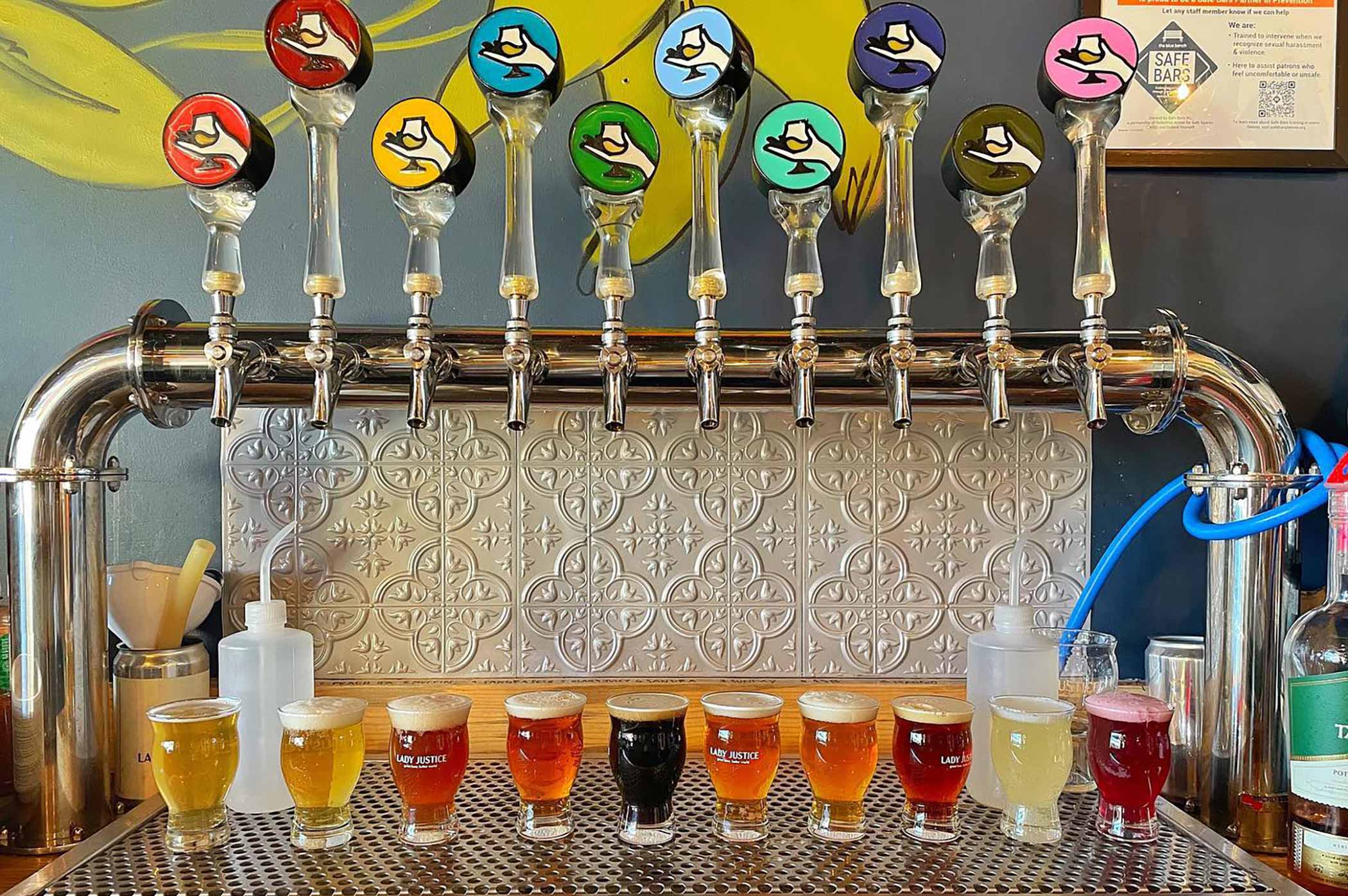Shop
Creating Safer Spaces in Craft Beer, Part Eight — How Consumers Can Champion Underrepresented Breweries
Part eight of ten.
“Creating Safer Spaces in Craft Beer” is an in-depth, ten-part series examining why it’s important to embrace diversity, equity, and inclusion in craft beer. Every Monday for the next ten weeks, we’ll be releasing a new part to the series.
[Creating Safer Spaces in Craft Beer, Part One — Why Isn’t Craft Beer More Diverse?]
[Creating Safer Spaces in Craft Beer, Part Two — What Does a Safe Space Look Like?]
[Creating Safer Spaces in Craft Beer, Part Three — Does Every Brewery Needs a Code of Conduct?]
[Creating Safer Spaces in Craft Beer, Part Four — Hire Intentionally and Train Your Team]
[Creating Safer Spaces in Craft Beer, Part Five — Start a Vocational Program]
[Creating Safer Spaces in Craft Beer, Part Six — Crafting Inclusive Events for Your Community]
[Creating Safer Spaces in Craft Beer, Part Seven — Brewing Beers That Make a Difference]
The industry needs allies. And you can be one of them.
More breweries speaking out and doing the work is great, but craft beer also needs its consumers to carrying some of the load. But the work shouldn’t fall only on the shoulders of underrepresented people.
“The onus constantly falls on that of marginalized groups and communities,” Instagram influencer and brewer Grey Stone (@isbeeracarb) told Hop Culture. “We need other people to speak up. We need straight white cis-males to step it up and be allies.”
And that doesn’t just mean liking a post.
“I feel like I get so many messages from men who are supporting, but I don’t actually see them doing anything,” says Stone.
Ren Navarro, (one of Hop Culture’s 10 People to Watch in Craft Beer in 2022) , founder of Beer. Diversity., a Canadian company educating and advocating for diversity in the craft beer industry, shares that sentiment.
“What does it mean to be an ally?” she queries. “The people I know who are shouting at me that they’re allies won’t get their hands dirty.”
So how can you—the consumer—make a difference?
It’s really not as hard as you might think.
[Creating Safer Spaces in Craft Beer, Part One — Why Isn’t Craft Beer More Diverse?]
[Creating Safer Spaces in Craft Beer, Part Two — What Does a Safe Space Look Like?]
[Creating Safer Spaces in Craft Beer, Part Three — Does Every Brewery Needs a Code of Conduct?]
[Creating Safer Spaces in Craft Beer, Part Four — Hire Intentionally and Train Your Team]
[Creating Safer Spaces in Craft Beer, Part Five — Start a Vocational Program]
[Creating Safer Spaces in Craft Beer, Part Six — Crafting Inclusive Events for Your Community]
[Creating Safer Spaces in Craft Beer, Part Seven — Brewing Beers That Make a Difference]
“Creating Safer Spaces in Craft Beer” is an in-depth, ten-part series examining why it’s important to embrace diversity, equity, and inclusion in craft beer. Every Monday for the next ten weeks, we’ll be releasing a new part to the series.
What Does It Look Like to Support Underrepresented Breweries?

Crowns & Hops The Dopest hazy IPA | Photography courtesy of Crowns & Hops
Honestly, it can look many different ways.
As consumers, you can choose where to spend your hard-earned dollars. Drinking one of the benefit beers we mentioned in Creating Safer Spaces in Craft Beer, Part Seven — Brewing Beer That Make a Difference is a great way to show your support. However, you don’t need to limit your participation to an occasional, limited-release beer or collab. In fact, we challenge you to expand your field of view even incrementally.
Have a local watering hole? Next time you’re there, look at who they have on tap and support. Could you suggest they feature an underrepresented brewery you love?
“In order for all ships to lift, people have to understand you’re in the water… that you’re not just waving from shore hoping they’ll get successful,” said Crowns & Hops Co-Founder Teo Hunter in a Tap Talk at the California Craft Beer Summit last March, noting there are less than seventy Black-owned breweries out of 9,000+ in the country.
Stay plugged in to the events breweries in your neighborhood host. Maybe there is a chance for you to attend some of the excellent ones we mentioned in [Creating Safer Spaces in Craft Beer, Part Six — Crafting Inclusive Events for Your Community]
For instance, Homos and Homies, an event started by Goldspot Brewing that invites a BIPOC vegan food truck and a Queer-owned one, along with Queer artists and vendors, to set up on Goldspot’s patio. Ten percent of all sales that day go to a different local food justice or advocacy group.
Or Queer Love Letter, a Valentine’s Day event started by Lady Justice Brewing featuring drag story time with LaLa Queen and a drag show with a bunch of her favorite drag friends to raise money for Parasol Patrol. A nonprofit that uses rainbow umbrellas to block kids from seeing anti-Queer protests, Parasol Patrol essentially shields kids from sh**ty people.
Lady Justice Co-Founder Betsy Lay says that the night exceeded everyone’s expectations. Drag story time started at 6 pm, with the drag show following around 8 pm. “We were expecting the families to go home … but they stayed the whole night,” says Lay. “They partied so hard with these drag queens; it was so fun to watch. There were adults in the room, but the stars were this group of twenty to thirty kids who did not go home, raging with drag queens on Valentine’s Day.”
Lookout for festivals, as well. Attending these large-scale events can be an easy way to drink beer from a ton of marginalized breweries in one place and learn about new ones you can continue to support after the fact.
Hop Culture started its Beers With(out) Beards Festival that celebrates women, femme-identifying, and non-binary folx in craft beer in 2018, and its Queer Beer Fest in 2021. We morphed this year’s Queer Beer into a beer box feature twelve beers from Queer-owned, Queer-led, or Queer-supporting breweries.
SUPPORT NOW. GET A QUEER BEER BOX
Other great events you can find around the country include: Dames And Dregs, FemALE Brew Fest, and, of course, Barrel & Flow Fest, the nations first event supporting Black and Brown brewers and brewery owners.
“Going in the goal was to start conversations between various communities and make a change for the good for our people; It’s a billion-dollar industry, and we are the most economically disparaged category in America, so this is an opportunity for us,” Barrel & Flow Co-Founder Day Bracey said in the documentary One Pint at a Time. “I hope the beer industry has more diversity whether the beer industry sees a need for it or we kick the f**king door down.”
Often, all you have to do is participate. And hey, you’ll most likely drink some incredible beer while doing it. You’re supporting not only a brewery, but an organization that could use your funds and footholds.
“This is a call to action for all of you, not just those hearing this conversation but those that go to your home and neighbor breweries,” says Hunter. “Do you know the local Black-owned or women-owned brewery out there? Promise you it’s only one or two, and it won’t hurt to champion them.”
How to Find Breweries to Champion

Photography courtesy of Lady Justice Brewing Co.
Again, it’s not too hard these days.
A quick search through Instagram could do the trick. For instance, check out our piece on The Boundary-Breaking Craft Beer Instagrams We’re Following in 2023. Many of these folks are either working at or following underrepresented breweries that could use your support. Follow them on Instagram, see who they’re supporting and writing about, and follow suit.
Beyond that, the good news is we’ve done a lot of the work for you! If you’re looking for a place to find underrepresented breweries to champion, check out some of these pieces:
1. 41 Queer-Led and Queer-Supporting Breweries to Champion Right Now
2. Black-Owned Breweries in the United States
3. Best AAPI-Owned Breweries and Brands to Support Right Now (And Forever)
4. From Couches to Craft Beer: A New Generation of South Asian Business Owners Brewing Beyond Borders
5. 77 Women-led Breweries to Support Right Now
6. 7 Indigenous Breweries to Support During Native American Heritage Month (And Forever)
7. The 20 Latine-Owned Breweries to Support Right Now
Then, go forth and drink one beer. And then another. Write about it, post about the brewery on your social media channel, take your friends there. It’s easy to see how things can quickly snowball.
“That’s what we do in craft beer,” says Hunter. “We don’t just drink one beer.”
And you have to start somewhere.
Up next: Creating Safer Spaces in Craft Beer, Part Nine — It’s Okay to Make Mistakes, Just Don’t Tick Boxes




